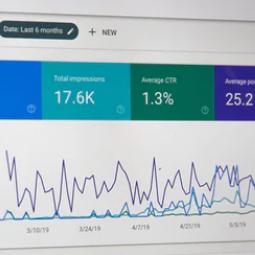Email marketing is a cheap and efficient way to get your organisation’s message out to people who actually want to hear it. If your organisation is regularly writing new content – whether it’s fundraising campaigns, newsletters, advocacy messages, information about client services or articles on your website – you could be including that content in an eDM (electronic direct mail) delivered directly to those who want it most.
And if you're not sure if they are still a valid communication tool, the answer is yes – if done well, they most definitely are.
Why get an email marketing system?
Online email marketing systems are usually free or cheap, and they make it simple to collect subscribers and to build and send your emails. Using an online email marketing system will also help you avoid getting blacklisted by internet service providers as a spammer, and you’ll be less likely to end up in your recipients’ junk mail folder. By law, you have to make it easy for recipients to unsubscribe from your emails, and an online system makes that simple for them and automatic for you. Online email systems also check your list of subscribers for errors.
An email marketing service makes it easy to know what happens to those emails you send out into the void. You’ll find out how many get delivered, how many get opened, and how many of your links are clicked. Some services will even let you test different emails with different audiences to see what works best.
It’s also considerably easier to make a professional looking email if you use an online service. Most have a range of templates you can choose from to make sure your newsletters look attractive and work in a range of browsers and as both text and html. To find out more about how to write and design a good email newsletter, read Nonprofit Tech For Good’s article, 10 e-newsletter best practices for nonprofits.
Is email marketing right for your organisation?
- Emails are more readable if the items in them are kept short. For more information, a reader should be able to click on a link that takes them back to your site. If your organisation doesn’t have a website, an email newsletter might not work for you.
- They work best if you have regular new content, and if it’s important to your organisation to interact frequently with your community. If neither of these is part of what your organisation does, an email newsletter won’t offer much value.
- You’ll also need a way to sign up subscribers. If your organisation regularly hosts events or attends conferences, it’s good to have a physical sign-up sheet where interested people can leave their email address. If you work regularly with clients, get them to sign up to the newsletter. If you run campaigns, make sure you’re asking people to subscribe to the newsletter when they donate or sign a petition.
Choosing an email marketing system
If you’re a small-to-medium organisation with a limited budget for marketing and fundraising, your email newsletter needs will likely be modest. Many of the ‘bells-and-whistles’ email packages are aimed at corporations who have the time and resources to properly segment their audiences, tailor messages to different groups and extensively monitor which campaigns lead to increased sales. If your needs are simpler, one of the packages below will likely fit the bill. However, there are many other packages out there.
When you're choosing a package, remember to consider how your readers might access the internet - do they tend to use computers, tablets, phones or all three? Make sure you choose a package that will meet their needs.
MailChimp – one of the most widely used systems
-
easy-to-use templates
-
reporting, so you know whether you’re getting the results you want
-
mobile optimisation, so your emails work on smartphones and tablets
-
integration with lots of other apps including Wordpress, Twitter, Facebook and Salesforce.
There is a free version, which allows up to 2,000 subscribers and 12,000 emails per month.
Campaign Monitor – another very popular system. Includes:
-
easy-to-use templates
-
useful ways to segment your audience and personalise messages
-
ability to test your emails and measure their performance
-
integration with other apps, particularly business-focussed apps.
There is a free test period, but eventually you have to choose either a basic or advanced package.
Connecting Up offer Bonjoro and Constant Contact email marketing solutions at a discounted price.
Is your email content delivering value?
You want to get value from the effort you put into writing and sending your email, so you should check the kinds of results you’re getting. Most online email packages include some form of analytics or reporting to let you know:
- how many emails are bouncing
- how many emails are being delivered
- how many emails are being opened
- how many links within the email are being clicked.
Most will also tell you what kind of rates you should expect for each of these metrics.
If you find you’re not meeting the goals you’ve set yourself, you can try testing out different things to see if it improves your newsletters’ open rates and click rates. Again, most online email systems include features for testing your newsletter. They let you change the content, the time you send the email and other variables and then test these changes against one another to see which versions reach the most readers (this is known as ‘A/B testing’, read about MailChimp’s A/B testing functionality here).
If you’re already using Google Analytics to assess how well your website is doing, you could try building some special URLs to use in your email newsletter to check how much traffic is going from your newsletter back to your website. Raven is one online tool that can help you build these URLs.
Read next
Check out our free webinar on newsletters for your digital marketing strategy here.
If you don't already have an online communications plan, it's a good place to start.





Status message
Thanks for rating this guide.